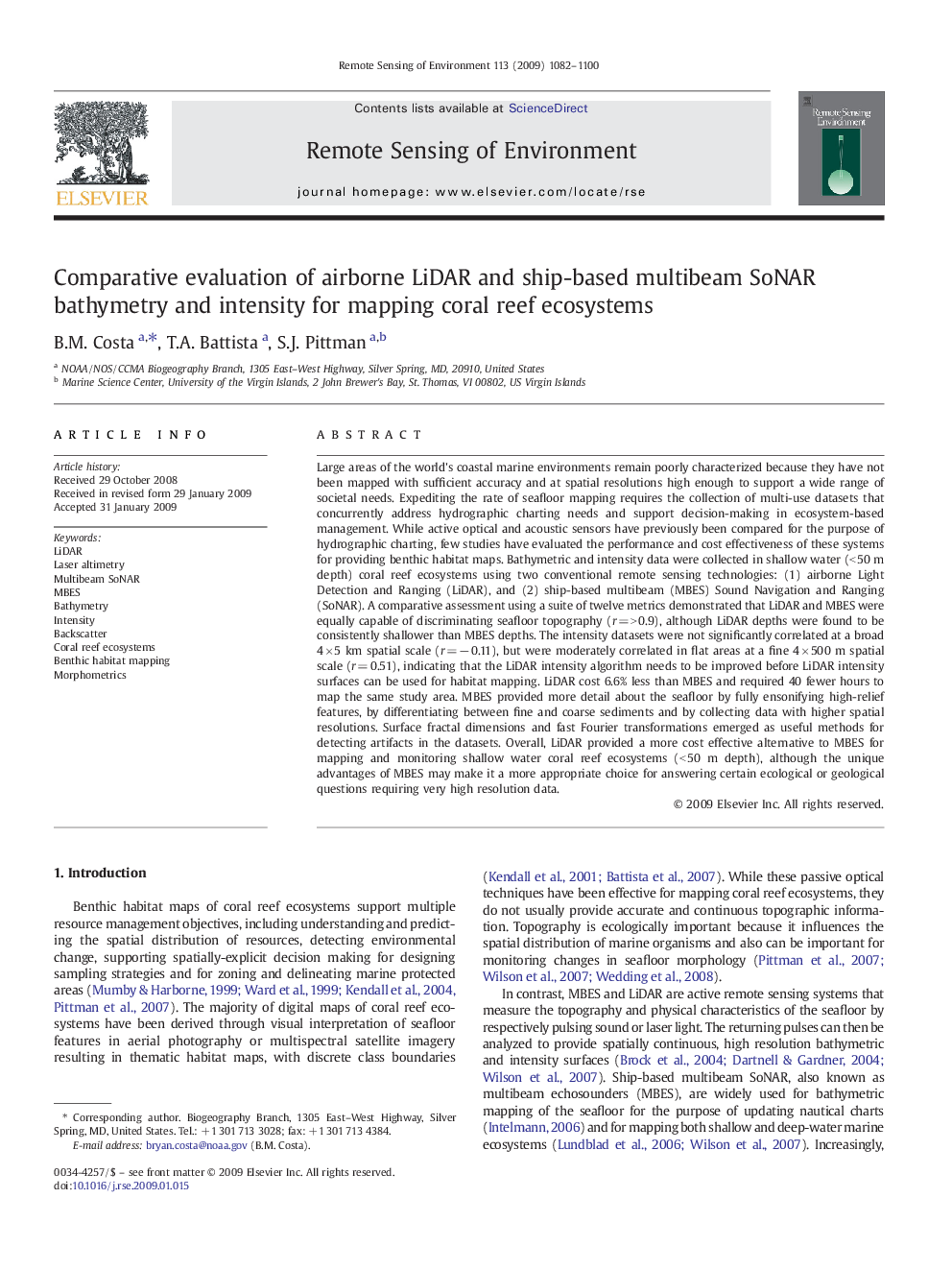| کد مقاله | کد نشریه | سال انتشار | مقاله انگلیسی | نسخه تمام متن |
|---|---|---|---|---|
| 4460297 | 1621316 | 2009 | 19 صفحه PDF | دانلود رایگان |

Large areas of the world's coastal marine environments remain poorly characterized because they have not been mapped with sufficient accuracy and at spatial resolutions high enough to support a wide range of societal needs. Expediting the rate of seafloor mapping requires the collection of multi-use datasets that concurrently address hydrographic charting needs and support decision-making in ecosystem-based management. While active optical and acoustic sensors have previously been compared for the purpose of hydrographic charting, few studies have evaluated the performance and cost effectiveness of these systems for providing benthic habitat maps. Bathymetric and intensity data were collected in shallow water (< 50 m depth) coral reef ecosystems using two conventional remote sensing technologies: (1) airborne Light Detection and Ranging (LiDAR), and (2) ship-based multibeam (MBES) Sound Navigation and Ranging (SoNAR). A comparative assessment using a suite of twelve metrics demonstrated that LiDAR and MBES were equally capable of discriminating seafloor topography (r = > 0.9), although LiDAR depths were found to be consistently shallower than MBES depths. The intensity datasets were not significantly correlated at a broad 4 × 5 km spatial scale (r = − 0.11), but were moderately correlated in flat areas at a fine 4 × 500 m spatial scale (r = 0.51), indicating that the LiDAR intensity algorithm needs to be improved before LiDAR intensity surfaces can be used for habitat mapping. LiDAR cost 6.6% less than MBES and required 40 fewer hours to map the same study area. MBES provided more detail about the seafloor by fully ensonifying high-relief features, by differentiating between fine and coarse sediments and by collecting data with higher spatial resolutions. Surface fractal dimensions and fast Fourier transformations emerged as useful methods for detecting artifacts in the datasets. Overall, LiDAR provided a more cost effective alternative to MBES for mapping and monitoring shallow water coral reef ecosystems (< 50 m depth), although the unique advantages of MBES may make it a more appropriate choice for answering certain ecological or geological questions requiring very high resolution data.
Journal: Remote Sensing of Environment - Volume 113, Issue 5, 15 May 2009, Pages 1082–1100